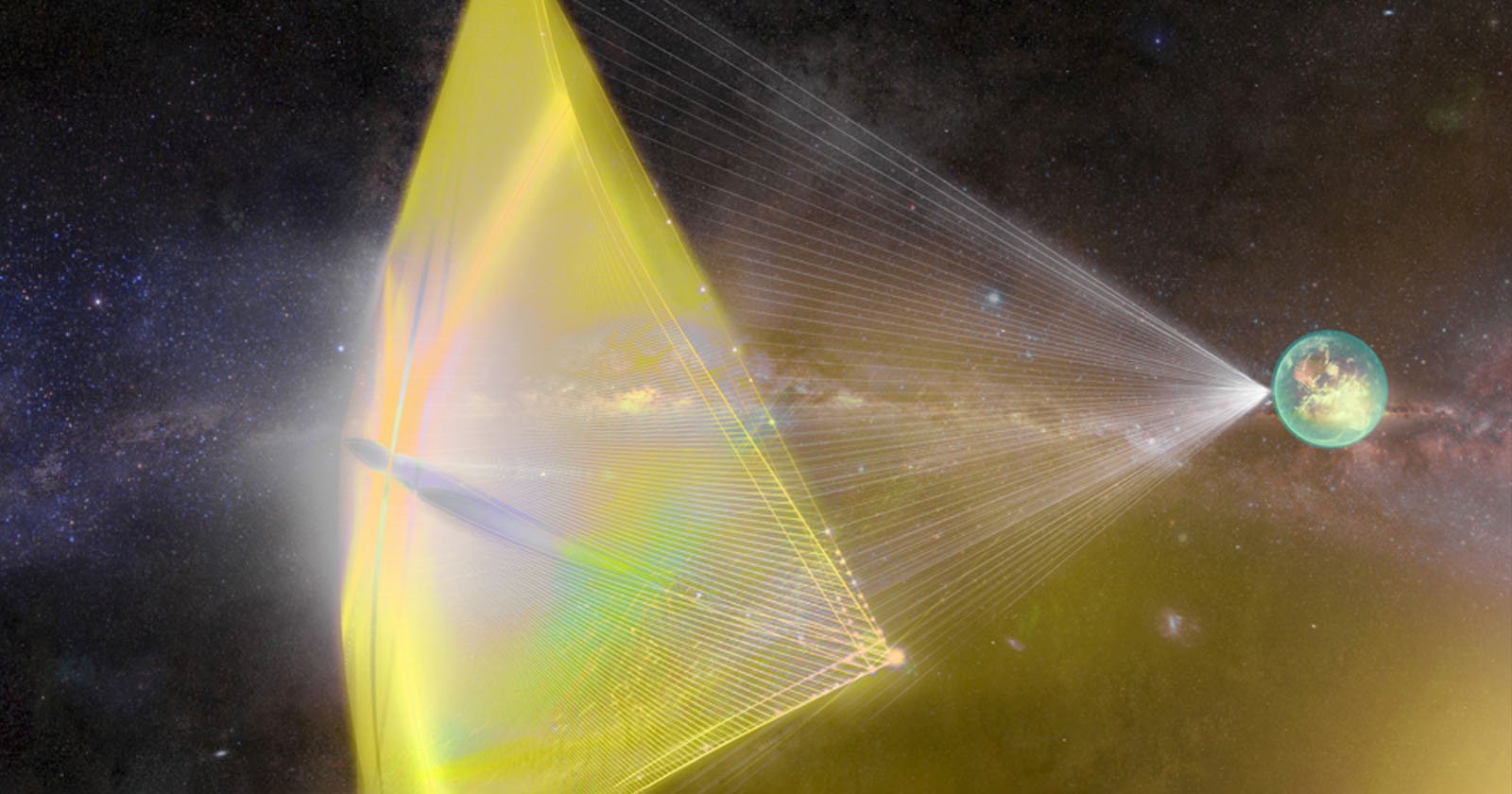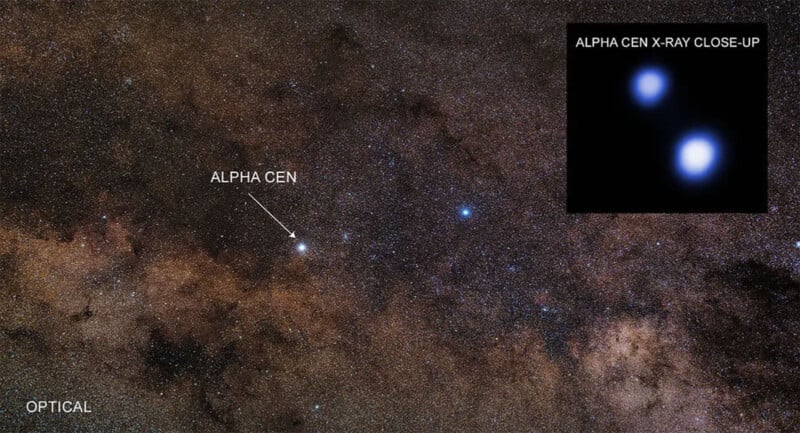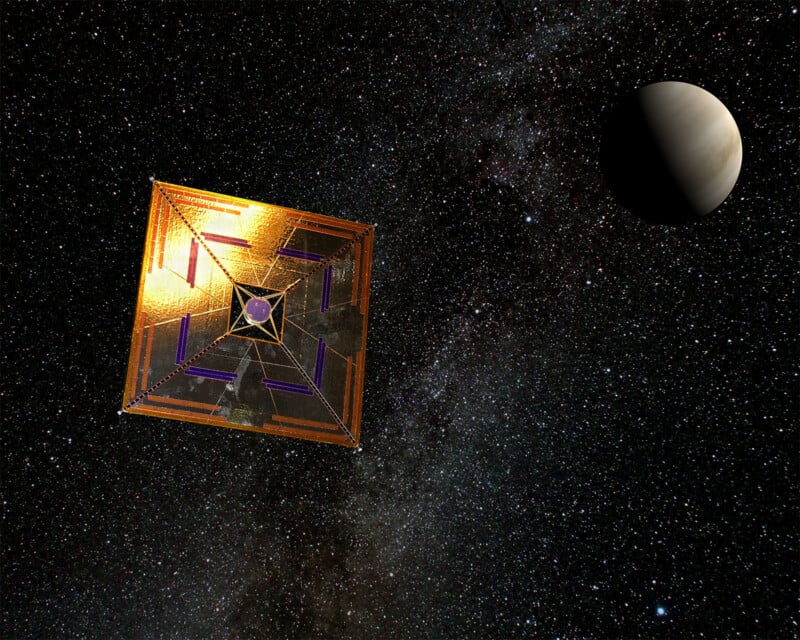
[ad_1]

Scientific and technological ideas can sound outlandish until they suddenly aren’t. Many things people take for granted today were once considered impossible. However, nearly a decade after being revealed, the $100 million Breakthrough Starshot interstellar space project still seems more like a pipe dream than anything else.
Breakthrough Starshot is a research and engineering project led by Breakthrough Initiatives, which was funded by Russian tycoons Yuri and Julia Milner and announced in 2015 by the late renowned physicist Stephen Hawking. The science program aims to search deep space for extraterrestrial life.
The multi-pronged search for alien life relies on multiple Breakthrough projects. One is Breakthrough Listen, a $100 million project searching for extraterrestrial audio communications. It is the most extensive search for alien communication data ever.
There is also Breakthrough Message, a program to study the ethics of sending communications out into space; Breakthrough Watch, an astronomical program to search for Earth-like planets in the cosmic vicinity of Earth; and Breakthrough Enceladus, a bio-signature probe mission looking for signs of life on Saturn’s eponymous moon, Enceladus.
Finally, there is Breakthrough Starshot, which is the focus of this article. Breakthrough Starshot is perhaps the most ambitious mission under the Breakthrough umbrella. It is a research and development engineering project to develop a fleet of lightsail interstellar probes.
If a “lightsail” space probe sounds like something out of science fiction, that’s because it is. For now. The idea is it’s possible to use radiation pressure created by the Sun to propel ships through space at extreme, unprecedented speeds. Much like a sailboat on Earth is moved by the wind, a lightsail, sometimes called a solar sail or photon sail, is pushed by energy, too — light.
The idea traces its roots to the famed 17th-century polyglot and astronomer Johannes Kepler, who conceived of the idea that a ship could be adapted to sail “heavenly breezes.” The idea has been passed down through the ages but was arguably popularized by Carl Sagan in the 1970s, who believed it possible to sail on photons in space.
The benefits of a lightsail spaceship are immense. It would be theoretically possible not only to reach cosmic destinations much faster but, importantly, to be able to return.

Within the context of Breakthrough Starshot, the goal is to reach the Alpha Centauri star system, which is 4.367 light-years from Earth, or put another way, 25 trillion miles. If a lightsail interstellar probe could travel at between 15% and 20% of the speed of light, the project’s target would be to reach Alpha Centauri in 20 to 30 years. Messages sent back to Earth would take approximately four years to arrive.
“With current rocket propulsion technology, it would take tens or hundreds of millennia to reach our neighboring star system, Alpha Centauri. The stars, it seems, have set strict bounds on human destiny. Until now,” writes Breakthrough Starshot. “In the last decade and a half, rapid technological advances have opened up the possibility of light-powered space travel at a significant fraction of light speed. This involves a ground-based light beamer pushing ultra-light nanocrafts — miniature space probes attached to lightsails — to speeds of up to 100 million miles an hour. Such a system would allow a flyby mission to reach Alpha Centauri in just over 20 years from launch, beaming home images of its recently-discovered planet Proxima b, and any other planets that may lie in the system, as well as collecting other scientific data such as analysis of magnetic fields.”
At its unveiling eight years ago, the team’s target was to launch the lightsail ship within “the next generation,” which is 20 to 30 years. The launched ship would take another 20 to 30 years to reach its destination.
As Breakthrough Initiatives admits, there are “a number of hard engineering challenges” in between the team — which includes Mark Zuckerberg and his significant financial support — and its goal.

Among these immense technical challenges are light propulsion power demands and the miniaturization of nearly every necessary component, including the cameras. After all, what good is sending a ship 25 trillion miles away if it can’t show people what it sees?
Not only must components be lighter and smaller than is currently possible, but they must also be able to withstand an inconceivably swift and violent journey through the frigid void of space. It’s difficult to engineer components to survive that type of journey at current spacecraft speeds, let alone exponentially faster travel.
Even within the nearly limitless confines of dreams, the lightsail space probe’s cameras are difficult to imagine. The team wants five sub-gram scale digital cameras, each offering at least two megapixels of resolution.

That said, scientists already managed to make an image sensor that is a mere 0.575 x 0.575 millimeters back in 2019, which is like the size of a grain of salt. That chip, designed for medical imaging, has a whopping 40 kilopixels (200 x 200 pixels) of resolution. The 1/36-inch sensor is backside-illuminated, by the way, which is remarkable.
For cameras to be useful at all in space, they must also have specialized filter arrays for isolating specific wavelengths of light, which is yet another challenge to overcome when talking about a sub-gram scale camera.
These are immense challenges to overcome with large sums of money and many intelligent people working away, but the situation seems more dire than that. One of the scientists on the project told Interesting Engineering last year that the team had stopped working due to a lack of funding.
The overall status of the project is unclear. While Breakthrough Initiatives has been working on various projects, information concerning Breakthrough Starshot has slowed to a crawl.
However, research on lightsails has continued. The concept has shown some promise in real-world tests, and brilliant minds at NASA have been steadily working away on “solar sail” technology for decades, and has made remarkable progress.
While Breakthrough Starshot may never come to fruition, its seemingly impossible goals may not be so impossible after all.
[ad_2]